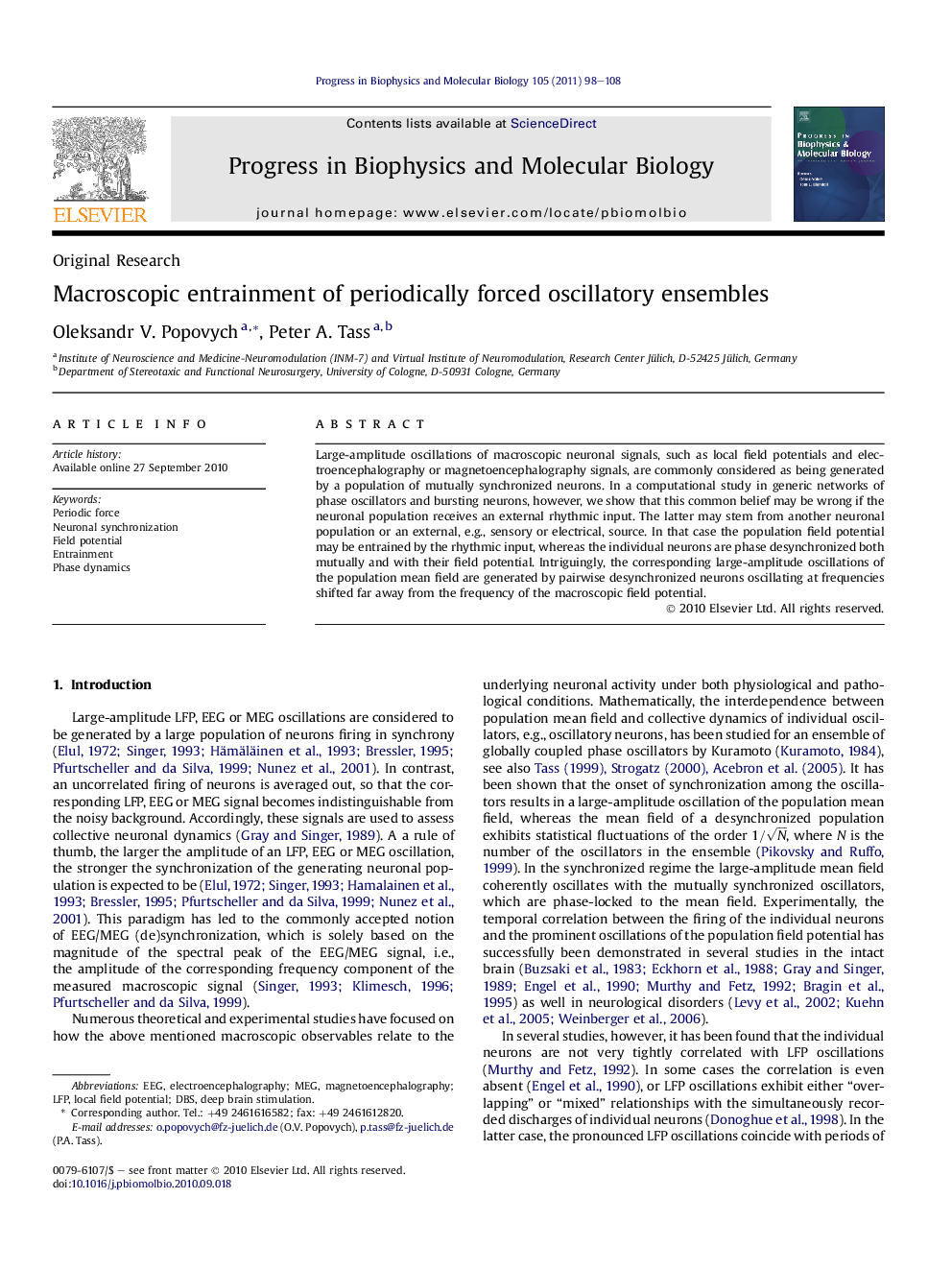| Article ID | Journal | Published Year | Pages | File Type |
|---|---|---|---|---|
| 8401567 | Progress in Biophysics and Molecular Biology | 2011 | 11 Pages |
Abstract
Large-amplitude oscillations of macroscopic neuronal signals, such as local field potentials and electroencephalography or magnetoencephalography signals, are commonly considered as being generated by a population of mutually synchronized neurons. In a computational study in generic networks of phase oscillators and bursting neurons, however, we show that this common belief may be wrong if the neuronal population receives an external rhythmic input. The latter may stem from another neuronal population or an external, e.g., sensory or electrical, source. In that case the population field potential may be entrained by the rhythmic input, whereas the individual neurons are phase desynchronized both mutually and with their field potential. Intriguingly, the corresponding large-amplitude oscillations of the population mean field are generated by pairwise desynchronized neurons oscillating at frequencies shifted far away from the frequency of the macroscopic field potential.
Keywords
Related Topics
Life Sciences
Biochemistry, Genetics and Molecular Biology
Biophysics
Authors
Oleksandr V. Popovych, Peter A. Tass,
